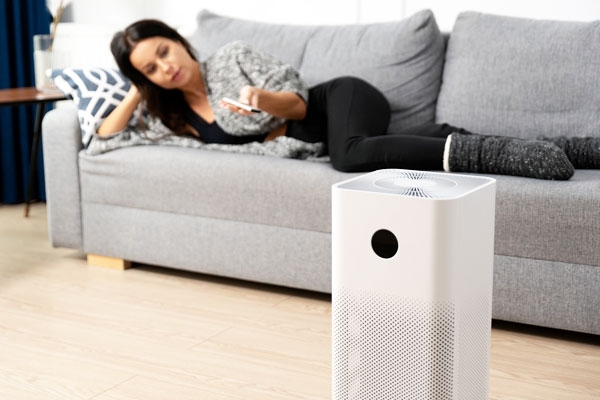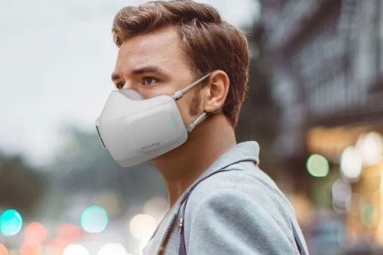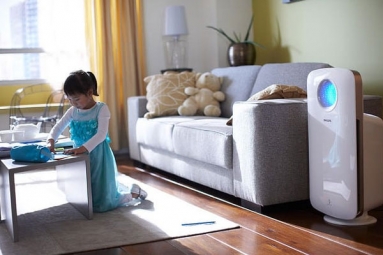
(Image source from: Canva.com)
The increasing pollution in major cities in India has made it essential to have an air purifier. Poor airflow in indoor areas has led to pollution levels inside being 2.5 times worse than outside air. To support long-term health, there are new portable air purifiers available for use indoors, ranging from small necklace models that clean nearby air to larger, more powerful units with three to four layers of filtration. With so many choices, it can be hard for someone seeking an air purifier to deal with the growing pollution. To select the appropriate one, it’s necessary to consider the space that will be covered and the type of filter that can remove PM2.5 and PM10 particles. To help with this, there are seven key factors to think about before purchasing an air purifier, but first, let’s examine the advantages of using air purifiers at home.
Having air purifiers at home can greatly improve the quality of the indoor air, reducing feelings of discomfort, stuffiness, filtering out pollutants, and minimizing bad smells and allergens. This makes a compelling argument for investing in a high-quality air purifier, which can lead to breathing in cleaner air. Here are some advantages of using air purifiers in your home:
- Enhances air quality by clearing pollutants such as PM2.5 and PM10.
- Decreases allergic reactions since heavy metals in polluted air can cause irritation in the eyes, nose, and ears for those with seasonal allergies.
- Reduces airborne germs like harmful bacteria and fungi that can lead to serious health issues.
- Assists in eliminating odors because the activated carbon filter in the air purifier can absorb unpleasant smells from the kitchen, pets, exhaust fans, and most notably, the burnt smells that fill the air when we wake up.
- Improves sleep quality as allergens, germs, and irritants are continually filtered out.
The many health advantages of air purifiers make them a logical choice for overall health and well-being in the long run. Now, let’s look at the checklist that will guide us in selecting the correct air purifier for our home. A wide range of air purifiers can be found on the market, and it’s important to know which filter is needed to effectively remove pollutants. Here’s a seven-point checklist that will simplify the process of choosing the right air purifier:
Filtration: Filtering out pollutants is important because these are the harmful substances that can cause respiratory issues in individuals. A HEPA filter, or High-Efficiency Particulate Air filter, is essential since the high levels of pollutants in the air must be filtered effectively for clean air. This filter is important as it captures 99.97% of tiny particles like PM2.5, dust, pollen, and mold spores. Additionally, ensure that the air purifier includes an activated carbon filter to absorb odors, smoke, and harmful volatile organic compounds.
Room Size: When selecting an air purifier, a key factor to think about is the clean air delivery rate. This refers to how much air, measured in cubic meters or feet, the purifier can clean every hour indoors. The guideline to keep in mind while evaluating the room size for effective air purification is to ensure that the rate is adequate to refresh the entire room. The air should be cleaned and replaced at least 4 to 5 times each hour for optimal results.
Filter Replacements: The HEPA filter has to be changed regularly because it gets dirty from long-term use in polluted environments. The yearly expense for changing filters includes both the HEPA filter and the activated carbon filter. Typically, a HEPA filter lasts between 8 to 12 months, but this period can be reduced if it’s exposed to a lot of pollutants and heavy metals. A crucial feature of the air purifier should be a filter change indicator, which shows when it’s time to replace the filter.
Noise Factor: For an air purifier, aim for a noise level lower than 30 to 35 decibels in sleep mode. This helps ensure good sleep quality without interruptions during its extended use.
Automation: The air purifier should come with a digital display for PM2.5 or air quality sensors to clearly show the current state of the air. This confirms whether the air quality is affected while the purifier is operating, demonstrating its efficiency. To make it user-friendly, the automatic mode should adjust the fan speed according to the air quality.
Health Warning: A critical point to remember is to avoid air purifiers that emit ozone, as this can irritate the lungs. Be wary of claims made about HEPA-like or washable HEPA filters, as they often do not perform the same way as true HEPA filters.
Energy And Placement: The air purifier should be designed to be energy efficient, as it needs to run for long periods to filter air effectively. It’s essential to check the wattage to ensure that a lower-wattage air purifier can help reduce electricity costs. It’s best to position the air purifier close to where people usually sit or spend most of their time indoors to gain the greatest health benefits and enjoy clean air.
This is the essential seven-point checklist for air purifiers that can guide you in choosing the right one.











